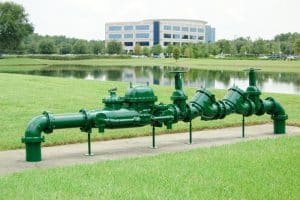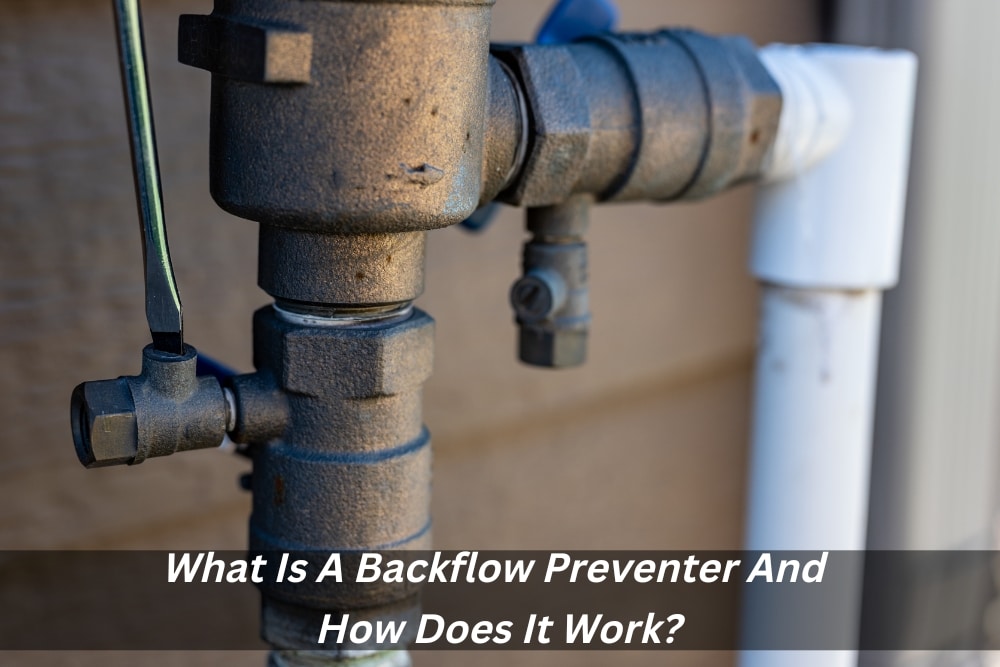What Is A Backflow Preventer?
A backflow preventer is a device that helps keep dirty water from flowing back into the clean water supply. This is important for keeping our drinking water safe and free of conta3minants.
There are a few different types of backflow preventers, but all of them work in basically the same way. A backflow prevention device must remain in place until it is officially tested by your local water authority. The endorsed plumber needs to submit a completed form 4 before installing the backflow preventer.
There is a fee for the registration of all new plumbing devices, which includes backflow preventers.
How Does Backflow Preventer Work?

A backflow preventer is a device that prevents potentially toxic chemicals from contaminating the public water supply. It works by stopping the flow of water to another irrigation system or container while allowing the flow of water out. This way, it can stop contaminants from entering the main water supply. There are a variety of different types of backflow preventers, and they’re used in a variety of applications the most common being fire sprinkler system cross-connections.
One thing to keep in mind is that backflow preventers are reactive devices; this means they only defend against certain potential problems. So, if there’s an existing issue with your water supply, you will need to keep the backflow prevention device installed until it’s officially tested by an endorsed backflow plaster. The licensed plumbing contractor must send a copy of Form 9 to Council after installing a new device. They’ll also need to submit a completed Form 4 before any fees for registration can be paid.
How does a backflow preventer prevent water contamination?
A backflow preventer is a device that is installed on your property in order to safeguard against potentially hazardous water. The backflow prevention device is a simple piece of equipment that prevents backflow the reverse flow of water from a potentially polluted source into the city water potable (potable water) or water supply.
The fee for registration is paid to register all new devices. Backflow prevention devices are used in the following scenarios:
- Backflow prevention devices detect water contaminants and prevent the backflow of untreated water into drinking wells, sewers, or other sources of drinking water.
- Backflow prevention devices are installed on mains to protect them from potential contamination. In these situations, it’s important to have a properly functioning backflow preventer so that you can avoid any health risks associated with contaminated water.
- A backflow prevention device is a valve that prevents water contaminated with harmful substances from entering the drinking water supply line. When an incident such as a drop in pressure causes water to be drawn back into the main, potentially polluting the drinking supply, having a working backflow preventer can help avoid any negative consequences.
- water pipes pressure changes caused by events such as firefighting operations or burst water mains cause backflow and are what lead to a backflow prevention device on your property. By installing a backflow preventer, you can help protect yourself from any potential water contamination.
What are the different types of backflow preventers?
There are a few different types of backflow preventers that you might encounter. The most common type is the check valve, which is a mechanical device that allows water to flow in one direction and blocks it from flowing in the opposite direction. This type of preventer is often used near pollutants, chemicals, or grease traps.
– Another common type of backflow preventer is the pressure vacuum breaker (PVB). This device prevents water from flowing backward into the drinking water supply when there’s a drop in pressure. It does this by releasing air into the line when it detects a decrease in pressure so that the water can’t flow backward.
– Backflow preventions can also be found near storage tanks and areas where industrial or commercial equipment processes drinking water. In these cases, you would need a testable backflow prevention device to make sure that your drinking water remains safe from contamination. Not all backflow prevention devices are testable, however–some rely on manual inspections instead.
– The level of risk for your area will determine what type of backflow preventer you need. If there’s a higher risk for medium to high levels of contamination, then you’ll need a testable device like a dual check valve or single check valve. These valves will prevent water from flowing backward into the drinking water supply.
How To Install a Backflow Preventer?
Installing a backflow preventer is a relatively simple process, provided you have the right tools and know-how. The following steps will guide you through the installation process:
1. Locate an appropriate spot for your backflow preventer. It’s important to install it in a place where it can easily be accessed for testing and maintenance.
2. Unpack the backflow preventer from its packaging and check that all components are included.
3. Refer to the manufacturer’s instructions to assemble the backflow preventer correctly.
4. Once assembled, attach the hoses and fittings according to the manufacturer’s instructions.
5. Prime and test the backflow prevention device before installing it on site. This involves filling it with water and checking for any leaks or other problems.
6 Install the device in your chosen location and attach it to your plumbing systems using clamps or screws (depending on the model).
7 Finally, connect your garden hose(s) to the outlet of the device and turn on your water supply
Signs of a backflow preventer failure
If you’re not sure whether your backflow preventer is working properly, there are a few signs you can look out for. One of the most obvious signs is if you experience a sudden drop in water pressure. This could be caused by a number of factors, but it’s usually an indication that something is wrong with the backflow preventer.
Another sign to watch out for is if you see any unusual behaviour in your plumbing system, such as intermittent flow or bubbling noises. If you notice anything strange, it’s important to get in touch with a professional as soon as possible to have your backflow preventer checked out.
Backflow preventers are essential pieces of equipment when it comes to protecting your home or business from contamination. If you do experience any problems with your backflow preventer, don’t hesitate to call a licensed plumber for assistance.
What are the benefits of using a backflow preventer?
There are many benefits of using a backflow preventer. The most important benefit is that it helps protect your water supply from contamination. It also helps protect the environment by preventing pollutants from entering the water system.
Backflow prevention devices must be properly maintained in order to function correctly and provide these benefits. It is the responsibility of a licensed plumbing contractor to send Form 9 (this can be found on the Queensland Government website) to the Council so they will know when a change in devices needs to occur.
Backflow prevention is a registered device, and it must remain intact until it is officially tested. The plumber must have completed form 4, which is payable by the endorsed plumber.


